Opinion
Easter Sunday carnage: Fr. Cyril Gamini and CID
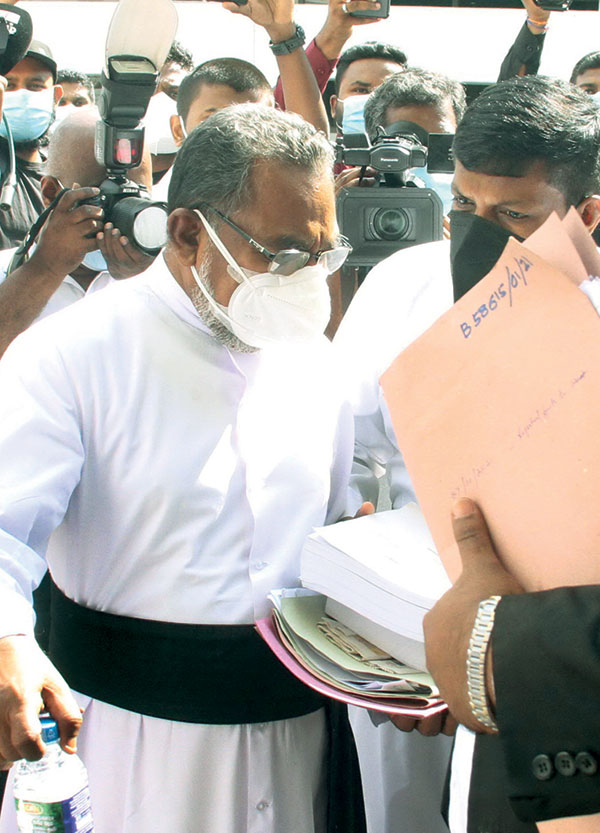
I read with interest the article published by Dr. Laksiri Fernando concerning the CID investigations into the allegations made by Fr. Cyril Gamini. Dr. Fernando professes that his article consists of an independent opinion, albeit known to Fr Cyril Gamini (Fr.CG) since 1996. However, there are several conclusions and points of view expressed by Dr. Fernando in his article, which belies the claim of an independent opinion, and is demonstrably and palpably biased and prejudiced, especially towards the Law Enforcement Authorities.
The article commences with a claim of harassment – that Fr.CG had to undergo two days of questioning for “no valid reason”. If an individual claims to have knowledge of the mastermind of the Easter Bomb attack, and, in fact, insinuates that the Head of State Intelligence was hand in glove with a terrorist, is that not a valid reason for the CID to question the accuser, at length, and give all opportunity and ample time to produce such evidence? The allegations of Fr CG, made a few years after the Easter Bombing (2019) and at a public forum, and not to the relevant law enforcement authorities investigating the matter, is, indeed, a serious issue affecting the National Security of the Country.
The allegation is directly contradictory to the contents in Zahran Hashim’s video recording aired on Swarnavahini and presented before the PCoI, where the authenticity of the same had been confirmed by the Government Analyst Department. In the said video, Zahran Hashim refers disparagingly to the state intelligence officers, calls them “dogs’ ‘ trying to destroy the cause and proudly declares their missions have no help from non-believers, which is polar opposite to the stance of Fr CG. Furthermore, such allegation is made by Fr CG in a background where over 350 intelligence reports had been issued during the period 2015-2019 to “the powers that be” by the State Intelligence Officers, citing the names of most of the suicide bombers, including Zahran Hashim, and their possible modus operendi (Vide: Dr. Rohan Gunaratne’s television interview where the Zahran Hashim video was aired in full as well as PCoI records). Such conduct certainly does not appear to be the actions of persons acting in concert with terrorists. Therefore, isn’t the CID justified to question Fr CG on what evidence he possesses to insinuate that the State Intelligence Authorities were hand in glove with Zahran Hashim, and which divine power gave him knowledge about the alleged mastermind?
If Fr CG is evasive in his disclosures, is the CID not entitled to question him repeatedly on this most vital issue? We have seen in the past, many ministers, ex- ministers, ordinary citizens, public officials being summoned to the CID (and even the illegal FCID) and being questioned for well over two days on various issues. This is nothing unusual in an ongoing investigation, not only in Sri Lanka, but in parallel law enforcement procedures worldwide. If Fr. CG is genuine about assisting the investigations into the Easter Bombing, he should be more than happy that the CID is meticulously questioning him on all aspects of the issue. Instead, he is now attempting to vilify the CID, and claiming that he is being questioned unnecessarily. Can he decide what is necessary and unnecessary And, what superior knowledge does Dr. Fernando have, to pen his article on the firm belief that Fr.CG had been subject to undue inquisition? Was he present at the CID, observing the manner of questioning?
What is truly shocking is that Dr. Fernando has unequivocally asserted that Major General Suresh Salley, as the Head of SIS, is apparently exerting undue influence, regarding these cases, on the CID. On what basis is such a serious allegation made against the Head of SIS? Dr. Fernando fails to support his declaration with an iota of proof. Surely, as a professional, he knows better than to make loose cannon statements for public consumption? He blatantly faults Major General Suresh Salley for instigating the CID to harass Fr. CG! As a member of the public, I feel the contrary is true! Major General Salley is unnecessarily harassed and defamed by not only Fr CG but by the Dr. Fernando himself, who has obviously written this article whilst on cuckoo land!
Dr. Fernando has then focused his attention to what he considers as the “mysteries” in this entire saga. In writing the mystery series, Dr. Fernando appears to have closed his eyes to the facts already well documented and on record, both at the PCoI and Zahran Hashim’s own video, where much of the motive for the bombing and the manner of execution is lucidly explained.
Dr. Fernando claims to be puzzled why churches and hotels were targeted and states that there is no nexus as Muslims and Christians lived in harmony! Well one only has to listen to Zahran Hashim himself for the mystery to be unveiled, as he firmly cites the famous New Zealand massacre of Muslims inside their place of worship – the Mosque – as the reason why churches were targeted. As to why the hotels were targeted, that, too, is explained by Zahran Hashim himself. If Dr. Fernando cares to recollect, all Five Star Hotels in Sri Lanka were full to capacity with tourists during that period, and on this particular Sunday most hotels held Easter Celebrations. Zahran, in his video, demands from his comrades not to let the foreigners “get away” and to remember what Allah said about non-believers …. He declares that the foreigners have killed “their people” and are now in Sri Lanka holidaying. He claims that these foreigners are the people who abused Allah, wrote the name of Allah on the backs of pigs and called Allah a Neuter. Surprisingly, when penning this all-important article for public consumption, Dr. Fernando appears to have no clue of this video aired on TV, presented to PCoI and accessible to us, the ordinary public. Did the Dr. Fernando at least file an RTI application and seek this information, before writing his mystery series and creating unrest in the mind of the general public!
Dr. Fernando then claims that the security organisations had been doing nothing since 2014 whilst these terrorist organisations were operating freely. Sir, how then do you explain the 350 odd reports, prepared during 2015 -2019, and sent to the Head of the State, the Prime Minister and the Police? No one can deny the existence of these reports clearly identifying the culprits, as the reports were dispatched and found in the offices of the relevant authorities. Most were presented before the various commissions. Does Dr. Fernando think these reports were written magically, with the waving of a wand by a fairy godmother, whilst the state intelligence agencies slept? Where is the ‘apathy’ and ‘indifference’, which Dr. Fernando speaks of relating to the state intelligence? Does he understand the role of an intelligence service in the first place? Their role is information gathering and submitting the same to the relevant authorities for action. In what manner had they shirked their responsibilities, when over 350 reports identifying correctly the culprits and the possible threats, have been sent to the relevant authorities? The PCoI recommendations, which Malcolm Cardinal Ranjith himself demanded implementation, had not faulted the State Intelligence Services. They fault those responsible for enforcing security measures. But now we have a “Dr. Fernando” in his wisdom blaming the blameless.
I find humour in Dr. Fernando’s observation that the security apparatus has failed to act on “the early warnings”, when the earliest and consistent warnings have been given by none other than the Military Intelligence and State Intelligence Services! Need I say more? He faults Major General Suresh Salley for lodging a complaint at the CID about the potential threats he may receive to his life and that of his family. Is it hisposition that holders of government office or the members of the law enforcement authorities cannot resort to the grievance procedures and protection of the law enforcement agencies that are available to all citizens of the country? Don’t or shouldn’t the State Intelligence Officers enjoy equal rights or the equal protection of the law?
Dr. Fernando proceeds to extol the virtues of Fr CG and states he had every right to express his views. But dear sir, it is not only “views’ ‘ he expressed! He claimed to know the identity of the “Mahamolakaraya” of the Easter Bombing, and insinuates Major General Suresh Salley having a clandestine association with him to the detriment of the nation! Surely, Dr. Fernando knows the difference between opinion and views that are based on true facts, as opposed to slander, mischief, or inciting the public by false rumours?
Finally, Dr. Fernando states he is not clear in what context Major General Suresh Salley’s name is mentioned by Fr. CG. This means that Dr. Fernando had not even listened to Fr. CG’s interview, prior to donning his garb as the gallant knight ready to defend the so-called victim!
Dr. Fernando and Fr.CG appear to be two peas in a pod!
MANORANI JINADASA
Opinion
Thoughts for Unduvap Poya
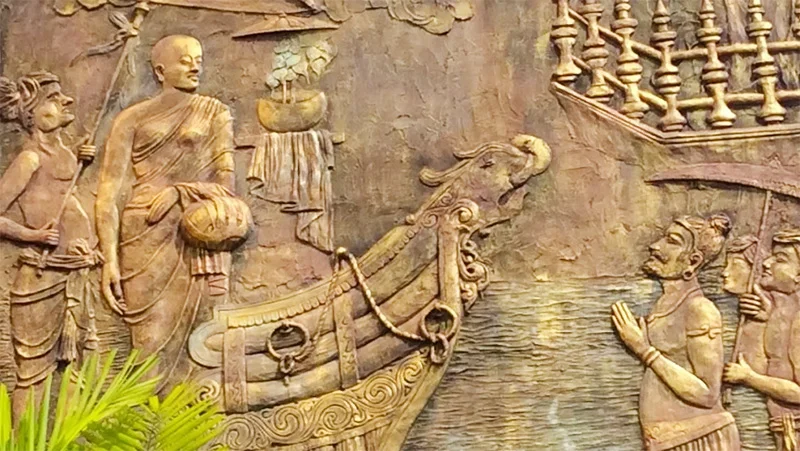
Unduvap Poya, which falls today, has great historical significance for Sri Lanka, as several important events occurred on that day but before looking into these, as the occasion demands, our first thought should be about impermanence. One of the cornerstones of Buddha’s teachings is impermanence and there is no better time to ponder over it than now, as the unfolding events of the unprecedented natural disaster exemplify it. Who would have imagined, even a few days ago, the scenes of total devastation we are witnessing now; vast swathes of the country under floodwaters due to torrential rain, multitudes of earth slips burying alive entire families with their hard-built properties and closing multiple trunk roads bringing the country to a virtual standstill. The best of human kindness is also amply demonstrated as many risk their own lives to help those in distress.
In the struggle of life, we are attached and accumulate many things, wanted and unwanted, including wealth overlooking the fact that all this could disappear in a flash, as happened to an unfortunate few during this calamitous time. Even the survivors, though they are happy that they survived, are left with anxiety, apprehension, and sorrow, all of which is due to attachment. We are attached to things because we fail to realise the importance of impermanence. If we do, we would be less attached and less affected. Realisation of the impermanent nature of everything is the first step towards ultimate detachment.
It was on a day like this that Arahant Bhikkhuni Sanghamitta arrived in Lanka Deepa bringing with her a sapling of the Sri Maha Bodhi tree under which Prince Siddhartha attained Enlightenment. She was sent by her father Emperor Ashoka, at the request of Arahant Mahinda who had arrived earlier and established Buddhism formally under the royal patronage of King Devanampiyatissa. With the very successful establishment of Bhikkhu Sasana, as there was a strong clamour for the establishment of Bhikkhuni Sasana as well, Arahant Mahinda requested his father to send his sister which was agreed to by Emperor Ashoka, though reluctantly as he would be losing two of his children. In fact, both served Lanka Deepa till their death, never returning to the country of their birth. Though Arahant Sanghamitta’s main mission was otherwise, her bringing a sapling of the Bo tree has left an indelible imprint in the annals of our history.
According to chronicles, King Devanampiyatissa planted the Bo sapling in Mahamevnawa Park in Anuradhapura in 288 BCE, which continues to thrive, making it the oldest living human planted tree in the world with a known planting date. It is a treasure that needs to be respected and protected at all costs. However, not so long ago it was nearly destroyed by the idiocy of worshippers who poured milk on the roots. Devotion clouding reality, they overlooked the fact that a tree needs water, not milk!
A monk developed a new practice of Bodhi Puja, which even today attracts droves of devotees and has become a ritual. This would have been the last thing the Buddha wanted! He expressed gratitude by gazing at the tree, which gave him shelter during the most crucial of times, for a week but did not want his followers to go around worshipping similar trees growing all over. Instead of following the path the Buddha laid for us, we seem keen on inventing new rituals to indulge in!
Arahant Sanghamitta achieved her prime objective by establishing the Bhikkhuni Sasana which thrived for nearly 1200 years till it fell into decline with the fall of the Anuradhapura kingdom. Unfortunately, during the Polonnaruwa period that followed the influence of Hinduism over Buddhism increased and some of the Buddhist values like equality of sexes and anti-casteism were lost. Subsequently, even the Bhikkhu Sasana went into decline. Higher ordination for Bhikkhus was re-established in 1753 CE with the visit of Upali Maha Thera from Siam which formed the basis of Siam Maha Nikaya. Upali Maha Thero is also credited with reorganising Kandy Esala Perahera to be the annual Procession of the Temple of Tooth, which was previously centred around the worship of deities, by getting a royal decree: “Henceforth Gods and men are to follow the Buddha”
In 1764 CE, Siyam Nikaya imposed a ‘Govigama and Radala’ exclusivity, disregarding a fundamental tenet of the Buddha, apparently in response to an order from the King! Fortunately, Buddhism was saved from the idiocy of Siyam Nikaya by the formation of Amarapura Nikaya in 1800 CE and Ramanna Nikaya in 1864 CE, higher ordination for both obtained from Burma. None of these Niakya’s showed any interest in the re-establishment of Bhikkhuni Sasana which was left to a band of interested and determined ladies.
My thoughts and admiration, on the day Bhikkhuni Sasana was originally established, go to these pioneers whose determination knew no bounds. They overcame enormous difficulties and obtained higher ordination from South Korea initially. Fortunately, Ven. Inamaluwe Sri Sumangala Thero, Maha Nayaka of Rangiri Dambulla Chapter of Siyam Maha Nikaya started offering higher ordination to Bhikkhunis in 1998 but state recognition became a sore point. When Venerable Welimada Dhammadinna Bhikkhuni was denied official recognition as a Bhikkhuni on her national identity card she filed action, with the support of Ven. Inamaluwe Sri Sumangala Thero. In a landmark majority judgement delivered on 16 June, the Supreme Court ruled that the fundamental rights of Ven. Dhammadinna were breached and also Bhikkhuni Sasana was re-established in Sri Lanka. As this judgement did not receive wide publicity, I wrote a piece titled “Buddhism, Bhikkhus and Bhikkhunis” (The Island, 10 July 2025) and my wish for this Unduvap Poya is what I stated therein:
“The landmark legal battle won by Bhikkhunis is a victory for common sense more than anything else. I hope it will help Bhikkhuni Sasana flourish in Sri Lanka. The number of devotees inviting Bhikkhunis to religious functions is increasing. May Bhikkhunis receive the recognition they richly deserve.” May there be a rapid return to normalcy from the current tragic situation.”
by Dr Upul Wijayawardhana
Opinion
Royal Over Eighties
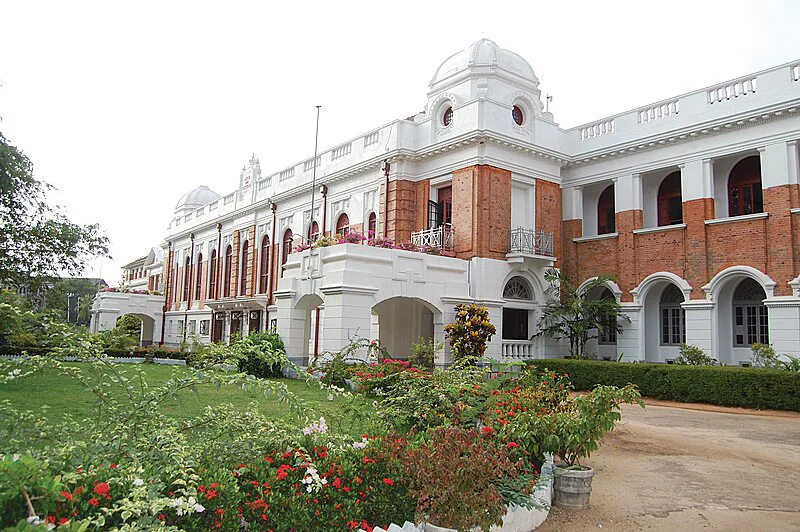
The gathering was actually of ‘Over Seventies’ but those of my generation present were mostly of the late eighties.
Even of them I shall mention only those whom I know at least by name. But, first, to those few of my years and older with whom speech was possible.
First among them, in more sense than one, was Nihal Seneviratne, at ninety-one probably the oldest present. There is no truth to the story that his state of crisp well-being is attributable to the consumption of gul-bunis in his school days. It is traceable rather to a life well lived. His practice of regular walks around the house and along the lane on which he lives may have contributed to his erect posture. As also to the total absence of a walking stick, a helper, or any other form of assistance as he walked into the Janaki hotel where this gathering took place.
Referencing the published accounts of his several decades-long service in Parliament as head of its administration, it would be moot to recall that his close friend and fellow lawyer, J E D Gooneratne, teased him in the following terms: “You will be a bloody clerk all your life”. He did join service as Second Assistant to the Clerk to the House and moved up, but the Clerk became the Secretary General. Regardless of such matters of nomenclature, it could be said that Nihal Seneviratne ran the show.
Others present included Dr. Ranjith de Silva, Surgeon, who was our cricket Captain and, to the best of my knowledge, has the distinction of never engaging in private practice.
The range of Dr. K L (Lochana) Gunaratne’s interests and his accomplishments within each are indeed remarkable. I would think that somebody who’d received his initial training at the AA School of Architecture in London would continue to have architecture as the foundation of his likes /dislikes. Such would also provide a road map to other pursuits whether immediately related to that field or not. That is evident in the leadership roles he has played in the National Academy of Sciences and the Institute of Town Planners among others. As I recall he has also addressed issues related to the Panadura Vadaya.
My memories of D L Seneviratne at school were associated with tennis. As happens, D L had launched his gift for writing over three decades ago with a history of tennis in Sri Lanka (1991). That is a game with which my acquaintance is limited to sending a couple of serves past his ear (not ‘tossing the ball across’ as he asked me to) while Jothilingam, long much missed, waited for his team mates to come for practices. It is a game at which my father spent much time both at the Railway sports club and at our home-town club. (By some kind of chance, I recovered just a week ago the ‘Fred de Saram Challenge Cup’ which, on his winning the Singles for the third time, Koo de Saram came over to the Kandana Club to hand over to him for keeps. They played an exhibition match which father won). D L would know whether or not, as I have heard, in an exhibition match in Colombo, Koo defeated Frank Sedgman, who was on his triumphant return home to Oz after he had won the Wimbledon tournament in London.
I had no idea that D L has written any books till my son brought home the one on the early history of Royal under Marsh and Boake, (both long-bearded young men in their twenties).
It includes a rich assortment of photographs of great value to those who are interested in the history of the Anglican segment of Christian missionary activity here in the context of its contribution to secondary school education. Among them is one of the school as it appeared on moving to Thurstan road from Mutwal. It has been extracted from the History of Royal, 1931, done by students (among whom a relative, Palitha Weeraman, had played a significant role).
As D L shows, (in contra-distinction to the Catholic schools) the CMS had engaged in a largely secular practice. Royal remained so through our time – when one could walk into the examination room and answer questions framed to test one’s knowledge of Christianity, Buddhism, Hinduism and Islam; a knowledge derived mostly from the lectures delivered by an Old Boy at general assembly on Friday plus readings from the Dhammapada, the Bhagavad Gita, the St. John’s version of the Bible or the Koran recited by a student at senior assembly on Tuesday / Thursday.
D L’s history of Royal College had followed in 2006.
His writing is so rich in detail, so precise in formulation, that I would consider this brief note a simple prompt towards a publisher bringing out new editions at different levels of cost.
It was also a pleasure to meet Senaka Amarasinghe, as yet flaunting his Emperor profile, and among the principal organisers of this event.
The encounter with I S de Silva, distinguished attorney, who was on Galle road close to Janaki lane, where I lived then was indeed welcome. As was that with Upali Mendis, who carried out cataract surgery on my mother oh so long ago when he was head of the Eye Hospital. His older brother, L P, was probably the most gifted student in chemistry in our time.
Most serendipitous perhaps was meeting a son of one of our most popular teachers from the 1950s, – Connor Rajaratnam. His cons were a caution.
by Gamini Seneviratne
Opinion
“Regulatory Impact Assessment – Not a bureaucratic formality but essentially an advocacy tool for smarter governance”: A response
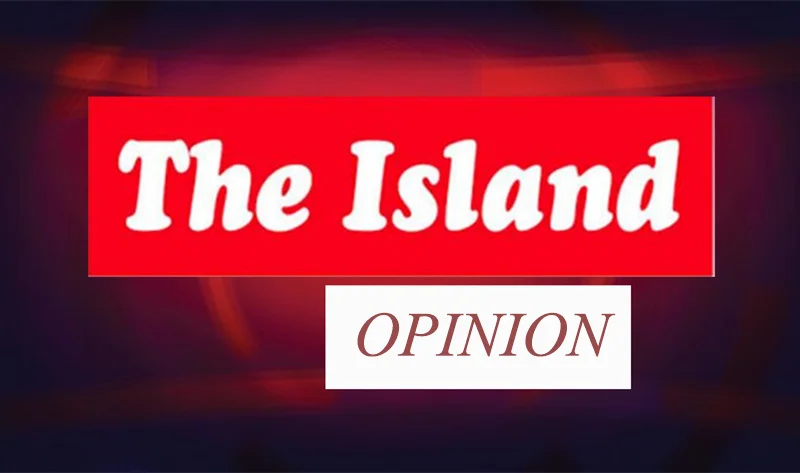
Having meticulously read and re-read the above article published in the opinion page of The Island on the 27 Nov, I hasten to make a critical review on the far-reaching proposal made by the co-authors, namely Professor Theekshana Suraweera, Chairman of the Sri Lanka Standards Institution and Dr. Prabath.C.Abeysiriwardana, Director of Ministry of Science and Technology
The aforesaid article provides a timely and compelling critique of Sri Lanka’s long-standing gaps in evidence-based policymaking and argues persuasively for the institutional adoption of Regulatory Impact Assessment (RIA). In a context where policy missteps have led to severe economic and social consequences, the article functions as an essential wake-up call—highlighting RIA not as a bureaucratic formality but as a foundational tool for smarter governance.
One of the article’s strongest contributions is its clear explanation of how regulatory processes currently function in Sri Lanka: legislation is drafted with narrow legal scrutiny focused mainly on constitutional compliance, with little or no structured assessment of economic, social, cultural, or environmental impacts. The author strengthens this argument with well-chosen examples—the sudden ban on chemical fertilizer imports and the consequences of the 1956 Official Language Act—demonstrating how untested regulation can have far-reaching negative outcomes. These cases effectively illustrate the dangers of ad hoc policymaking and underscore the need for a formal review mechanism.
The article also succeeds in demystifying RIA by outlining its core steps—problem definition, option analysis, impact assessment, stakeholder consultation, and post-implementation review. This breakdown makes it clear that RIA is not merely a Western ideal but a practical, structured, and replicable process that could greatly improve policymaking in Sri Lanka. The references to international best practices (such as the role of OIRA in the United States) lend credibility and global context, showing that RIA is not experimental but an established standard in advanced governance systems.
However, the article could have further strengthened its critique by addressing the political economy of reform: the structural incentives, institutional resistance, and political culture that have historically obstructed such tools in Sri Lanka. While the challenges of data availability, quantification, and political pressure are briefly mentioned, a deeper analysis of why evidence-based policymaking has not taken root—and how to overcome these systemic barriers—would have offered greater practical value.
Another potential enhancement would be the inclusion of local micro-level examples where smaller-scale regulations backfired due to insufficient appraisal. This would help illustrate that the problem is not limited to headline-making policy failures but affects governance at every level.
Despite these minor limitations, the article is highly effective as an advocacy piece. It makes a strong case that RIA could transform Sri Lanka’s regulatory landscape by institutionalizing foresight, transparency, and accountability. Its emphasis on aligning RIA with ongoing national initiatives—particularly the strengthening of the National Quality Infrastructure—demonstrates both pragmatism and strategic vision.
At a time, when Chairmen of statutory bodies appointed by the NPP government play a passive voice, the candid opinion expressed by the CEO of SLSI on the necessity of a Regulatory Impact Assessment is an important and insightful contribution. It highlights a critical missing link in Sri Lanka’s policy environment and provides a clear call to action. If widely circulated and taken seriously by policymakers, academics, and civil society, it could indeed become the eye-opener needed to push Sri Lanka toward more rational, responsible, and future-ready governance.
J. A. A. S. Ranasinghe,
Productivity Specialty and Management Consultant
(rathula49@gmail.com)
-
News4 days ago
Lunuwila tragedy not caused by those videoing Bell 212: SLAF
-

 News3 days ago
News3 days agoLevel III landslide early warning continue to be in force in the districts of Kandy, Kegalle, Kurunegala and Matale
-

 Latest News5 days ago
Latest News5 days agoLevel III landslide early warnings issued to the districts of Badulla, Kandy, Kegalle, Kurunegala, Matale and Nuwara-Eliya
-

 Features5 days ago
Features5 days agoDitwah: An unusual cyclone
-

 Latest News6 days ago
Latest News6 days agoUpdated Payment Instructions for Disaster Relief Contributions
-

 News1 day ago
News1 day agoCPC delegation meets JVP for talks on disaster response
-
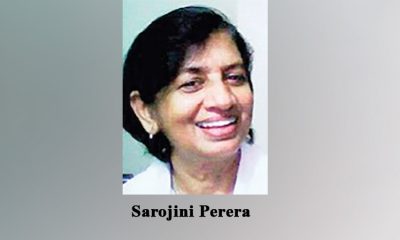
 News1 day ago
News1 day agoA 6th Year Accolade: The Eternal Opulence of My Fair Lady
-

 Latest News6 days ago
Latest News6 days agoLandslide Early Warnings issued to the Districts of Badulla, Colombo, Gampaha, Kalutara, Kandy, Kegalle, Kurunegala, Matale, Moneragala, Nuwara Eliya and Ratnapura













